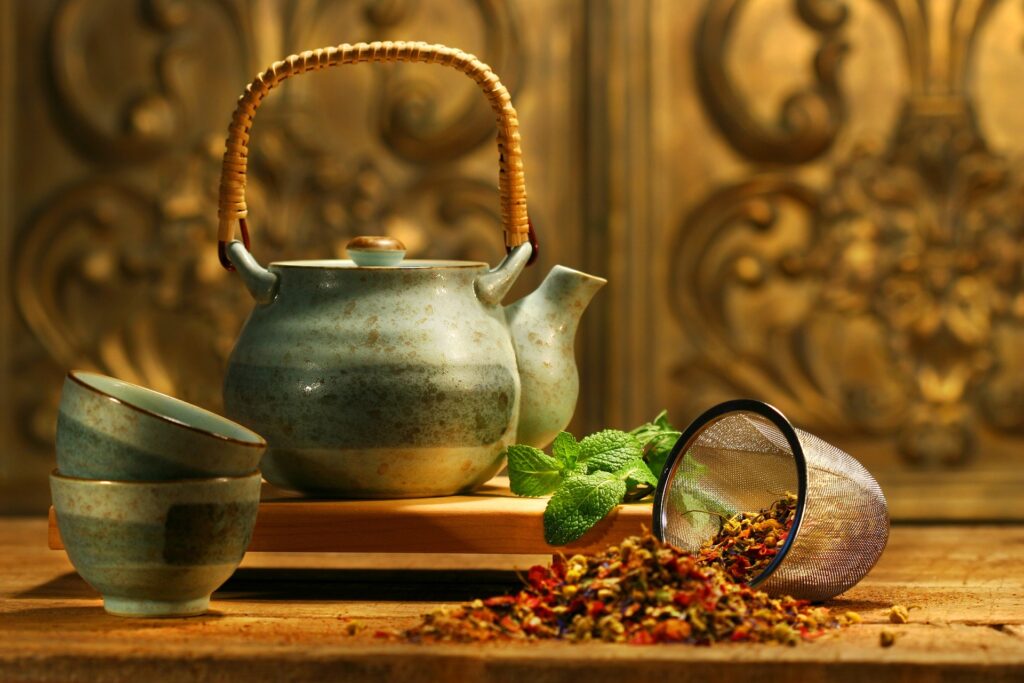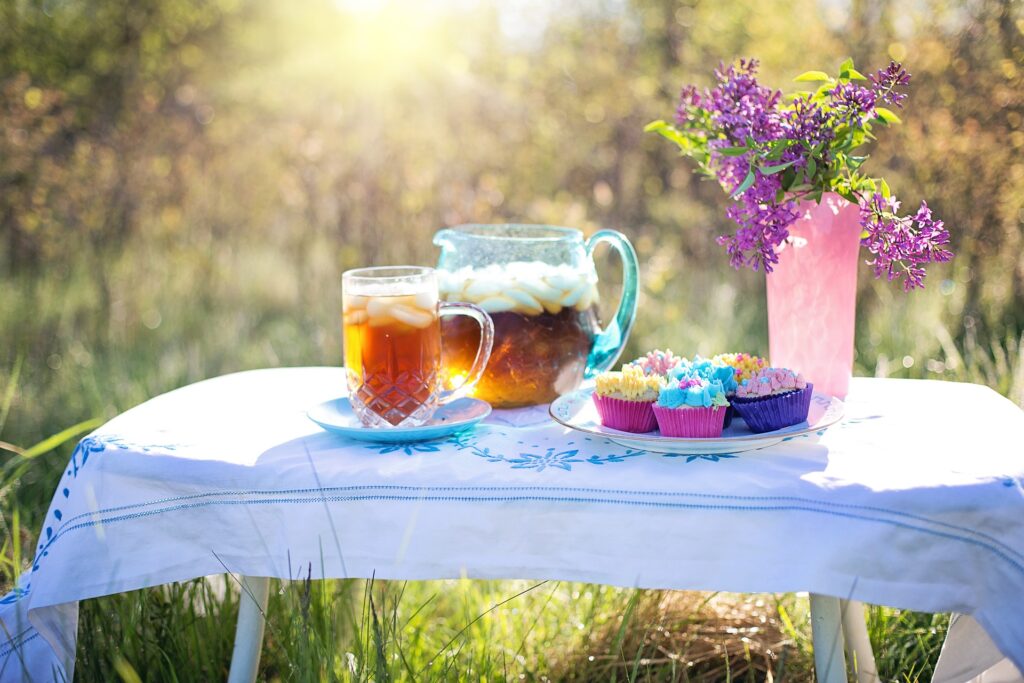Russian Tea holds a special place in the hearts of many, both in Russia and beyond. As we embark on this exploration of tradition and flavor, we delve into the rich tapestry of Russian Tea culture, uncovering its enduring charm and timeless rituals. As we go through on this majestic journey through the past, present, and future of Russian tea culture, we peel back the layers of time to reveal a legacy of flavors, and stories that continue to captivate and inspire.
Table of Contents

1. Origins of Russian Tea From Faraway Lands to Samovars
Russian tea has its roots in distant lands, with China being the original source of the beloved brew. Introduced to Russia in the 17th century via the ancient Silk Road, tea quickly found favor among the elite classes. However, it wasn’t until the 19th century that tea became a staple in Russian households, thanks to the Trans-Siberian Railway opening up trade routes.
2. The Rise of the Samovar in Russian Hospitality
Central to the Russian tea experience is the samovar, a traditional tea urn that symbolizes warmth, hospitality, and conviviality. Originating in the 18th century, the samovar became a fixture in Russian households, where families would gather around its radiant glow to share stories and savor tea brewed to perfection.
3. Tea as a Social Catalyst From Dostoevsky to the Dacha
Throughout Russian literature and history, tea emerges as a powerful social catalyst, bringing people together in moments of joy, sorrow, and contemplation. From the pages of Dostoevsky’s novels to the idyllic scenes of summer dachas, tea serves as a bridge between generations, fostering connection and camaraderie.
4. Tea as a Staple of Daily Life in Soviet Era
Even in the tumultuous years of the Soviet Union, tea remained a steadfast presence in Russian households, offering solace and sustenance amid adversity. Despite shortages and rationing, the ritual of brewing and sharing tea persevered, a testament to its enduring importance in the fabric of Russian society.
5. Embracing Tradition in a Contemporary World
In today’s fast-paced world, the tradition of Russian tea drinking faces new challenges, yet its allure remains undiminished. From trendy tea houses serving exotic blends to artisanal samovar workshops preserving age-old craftsmanship, Russia is experiencing a renaissance of social tea rituals and blending of tradition with innovation.

6. A Potent Brew for International Relations
Beyond the confines of the home, tea has played a significant role in Russian diplomacy, with the iconic samovar often taking center stage in high-stakes negotiations. From the historic Teheran Conference to modern-day summits, the shared act of tea drinking has served as a diplomatic icebreaker, fostering dialogue and understanding.
7. Diverse Flavors from Siberia to the Caucasus
Russia’s vast expanse encompasses a tapestry of cultures, each with its own unique tea traditions and flavors. From the fragrant herbal blends of Siberia to the aromatic black teas of the Caucasus, exploring Russia’s regional variations offers a sensory journey through its diverse landscapes and peoples.
8. Wellness and Healing Properties of Herbal Infusions
In addition to its social and cultural significance, tea holds a place of reverence in Russian folk medicine, where herbal infusions are prized for their healing properties. From soothing chamomile to invigorating mint, traditional remedies passed down through generations continue to offer comfort and relief.
9. Navigating the Nuances of Russian Tea Culture
As with any cultural tradition, Russian tea drinking comes with its own set of etiquettes and customs. From the proper way to pour tea to the significance of refusing a refill, mastering the nuances of tea etiquette is essential for navigating social gatherings with grace and respect.
10. Exploring the Intersection of Culture and Creativity
Beyond its role as a beverage, tea has inspired artists and artisans alike, weaving its way into the fabric of Russian art and design. From intricately painted tea sets to whimsical tea cozies, the aesthetic allure of tea culture continues to inspire creativity and craftsmanship.

11. Innovations in Tea Technology and Sustainability
Looking ahead, the future of Russian tea culture is ripe with possibilities, fueled by innovations in technology and a growing emphasis on sustainability. From eco-friendly packaging to smart teapots that brew the perfect cup every time, the evolution of tea in Russia is poised to embrace the challenges of the 21st century.
12. Preserving the Tradition for Generations to Come
As we chart the course of Russian tea culture into the future, preserving tradition becomes paramount. Through education initiatives, heritage programs, and grassroots efforts, communities are coming together to ensure that the art of tea drinking continues to thrive for generations to come.
Conclusion:
Russian tea culture is a testament to the enduring power of tradition in an ever-changing world. From its humble origins to its vibrant present and promising future, tea remains a cherished cornerstone of Russian identity, uniting people across generations and borders.
FAQs:
- What are some traditional Russian tea accompaniments?
- Traditional Russian tea is often served with jam, honey, or pastries such as pirozhki or blini.
- Is tea still the most popular beverage in Russia?
- Yes, tea remains the beverage of choice for the majority of Russians, surpassing even coffee in consumption.
- Are there any superstitions associated with Russian tea culture?
- Yes, it is considered bad luck to place an empty teapot back on the stove, as it is believed to invite financial hardship.
- What is the significance of the samovar in Russian tea culture?
- The samovar symbolizes hospitality and warmth, serving as the focal point of social gatherings and family gatherings.
- How do Russians take their tea?
- Russians typically enjoy their tea strong and sweet, often with a slice of lemon or a spoonful of jam for added flavor.

